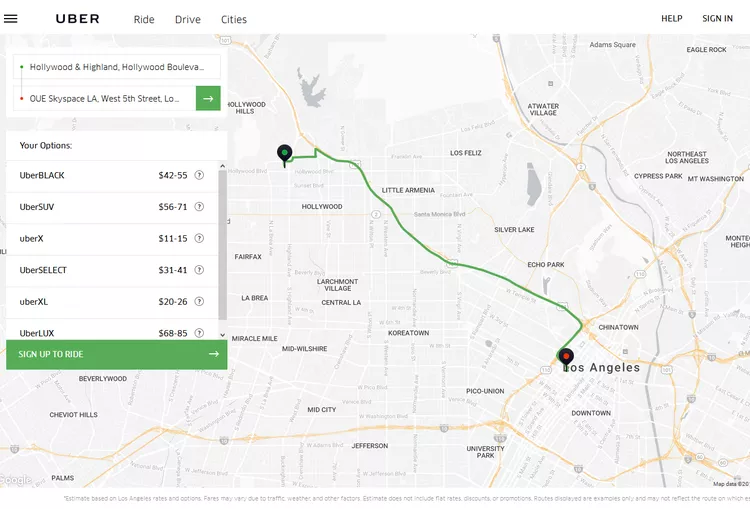Summary of Ridesharing in Los Angeles
Using Uber, Lyft and Sidecar in LA
The latest craze in transportation in urban areas like Los Angeles is using a smartphone app to request a ride. These rideshare services allow individuals to offer rides for a fee negotiated through your smartphone. Importantly, there’s no need to call or book online; you simply need a smartphone.
These rideshare apps enable users to catch a ride in the private vehicle of drivers, usually at a lower cost than traditional taxis. The primary rideshare services available in LA are Uber/UberX and Lyft, both of which facilitate easy access to nearby cars and allow users to check pricing, request the ride, and process payment—all through a mobile app. Cash is not involved in the transactions.
Uber offers various services, including Uber Plus, Uber SUV, and Uber Black Car, which utilize professional drivers. However, UberX is their budget-friendly option that employs screened regular drivers in their own vehicles. Lyft primarily relies on non-professional drivers, though professional drivers may occasionally participate.
How It Works
To use the app, you start by giving it permission to access your location. This feature allows you to see available cars nearby. Next, input your destination, and Uber will send your request to the closest driver. If the driver accepts, you’ll be offered a ride. Lyft also provides multiple options, allowing you to select from various available drivers, some of whom may incentivize you with perks such as home-made cookies.
Remember, both services require you to make requests exclusively via the smartphone apps. For potential discounts, social media platforms like Twitter may have promotional codes for new users, which could yield savings on your first ride.
How Much Does It Cost?
As of the latest data, an UberX journey from Santa Monica to Disneyland is estimated to cost between $50 and $68, while larger vehicles could range from $86 to $252. In contrast, a taxi for the same distance might total $113 to $140.
While Lyft does not disclose its pricing on its website, it commonly offers lower fares compared to Uber. Users can download both apps to compare the costs for identical trips, as both operate similarly.
Furthermore, rideshare drivers have flexible schedules and decide when to accept rides. This means during poor weather or holiday rushes, while demand may spike, fewer drivers may be inclined to work, resulting in dynamic pricing known as “surge pricing.” It’s vital to check comparable taxi rates to ensure you’re receiving a fair deal.
Who Is Your Driver?
Both Uber and Lyft conduct screenings and background checks on their drivers, offering you the option to view the driver’s picture along with their vehicle details prior to pickup. Interestingly, many drivers work for multiple services, and in cities like Los Angeles, your driver might even be an aspiring actor using their downtime wisely.
True Ridesharing
Recently, these apps have begun offering a service that allows users to share a ride with others going in the same direction and split the fare. If a driver identifies another passenger nearby traveling the same route, they may offer a discounted fare to accommodate both riders.
Rideshare To/From LAX
Los Angeles International Airport (LAX) classifies these services as Transportation Network Companies (TNCs). Both Uber and Lyft are permitted to pick up and drop off passengers at the airport, subject to an additional airport fee for these services. To meet your driver, proceed to the Ride Service Pick Up area located on the Upper/Departures Level at each terminal, denoted by a brown and black circle marked with the letter A in the center.




